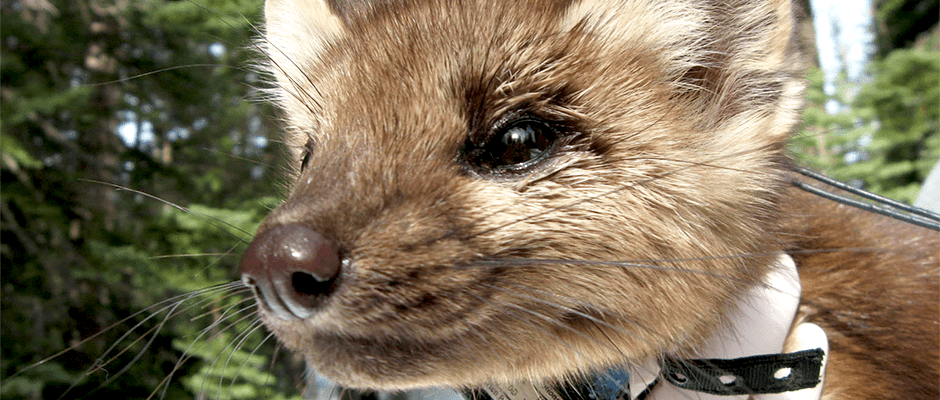Share this article
WSB: What’s the best way to detect martens?
Collecting distribution information for elusive species can be a challenge, but researchers wanted to find the best, most cost-effective way to do so.
In a case study published in the Wildlife Society Bulletin, researchers looked at two different detection methods — remote cameras and scent detection dogs — to compare how the two did at evaluating the distribution of the Humboldt subspecies of Pacific martens (Martes caurina humboldtensis) in coastal Oregon.
“The goal was to look at both survey efficiency in terms of the capacity of these noninvasive survey devices or techniques and cost efficiency,” said TWS member Katie Moriarty, the lead author of the study and a postdoctoral research biologist with the Pacific Northwest Research Station of the U.S. Forest Service.
Team members increased the density of remote cameras that had already been placed in the study site within 5 kilometers of previously known coastal marten habitat, and they also deployed detection dog teams trained to search for marten scat.
They found uncertainty for both methods, with martens often detected with one method but not the other. In 33 sites, 36.4 percent of units had marten detection by only scent detection teams, 30.3 percent only with remote camera and 33.3 percent detected by both techniques.
“We believe both methods are complementarily helpful if you want to decrease uncertainty,” Moriarty said. “And it depends on the study goal.”
More specifically, she and her colleagues found in terms of cost efficiency, if the goal is detecting a marten, detection dog teams are cheaper. But if the goal is identifying the number of individuals, cameras were cheaper.
Moriarty said these findings could apply to other forest carnivores as well, such as fishers. She plans to continue looking into the uncertainties of noninvasive survey techniques.
“It’s important to be thoughtful about multiple methods and surveys goals in advance of the study itself,” Moriarty said.
TWS members can log in to Your Membership to read this paper in the Wildlife Society Bulletin. Go to Publications and then Wildlife Society Bulletin.
Header Image: Pacific martens are difficult to detect, but researchers recently found remote cameras and detection dogs used together can help. ©Katie Moriarty








